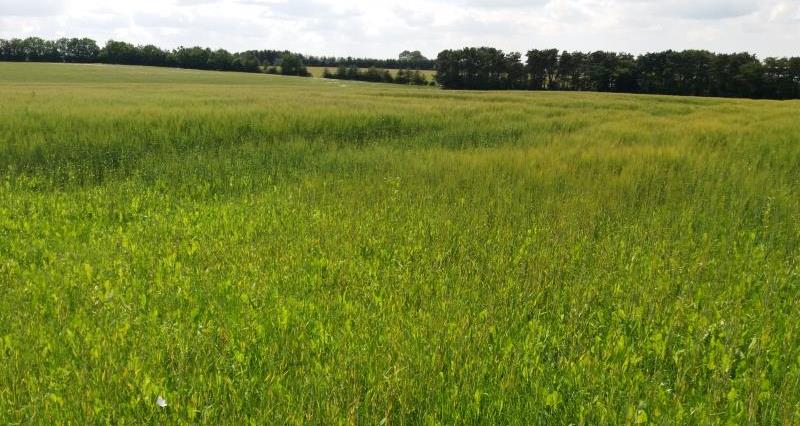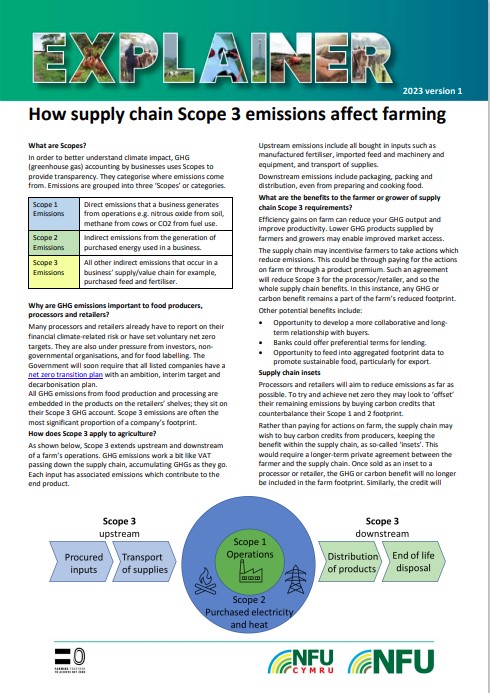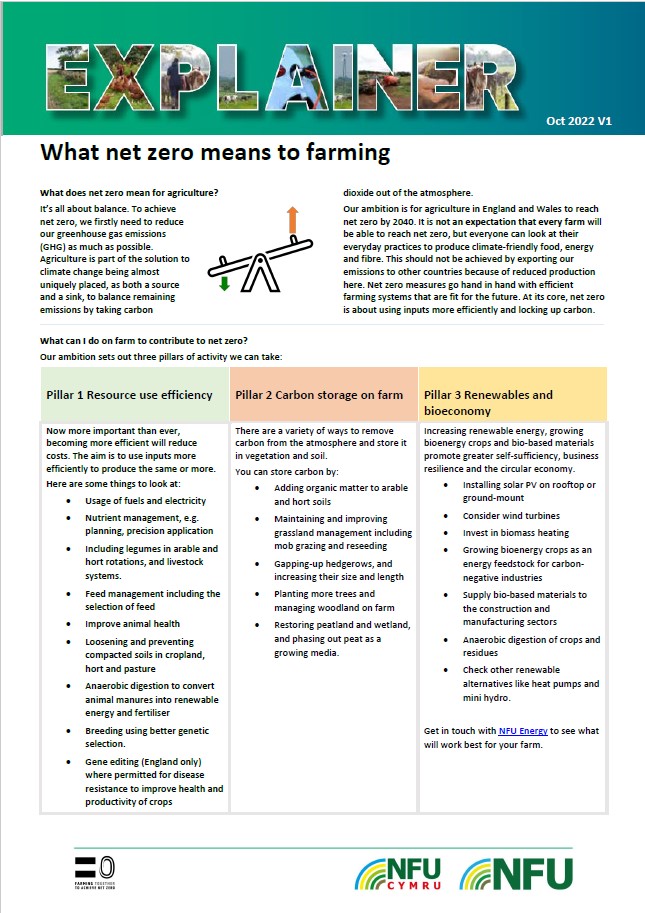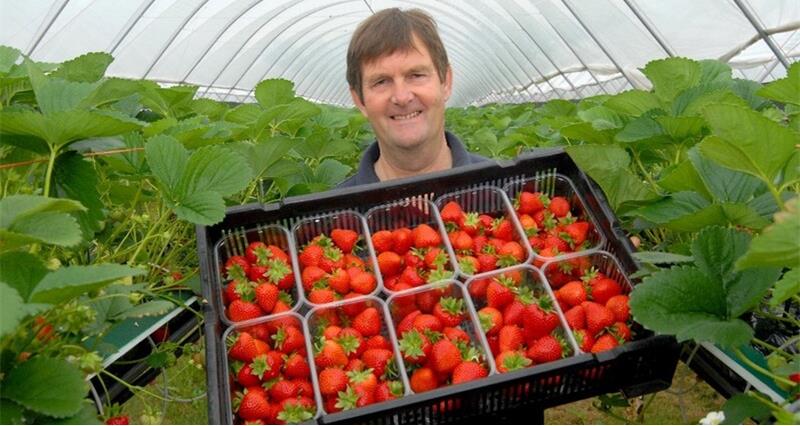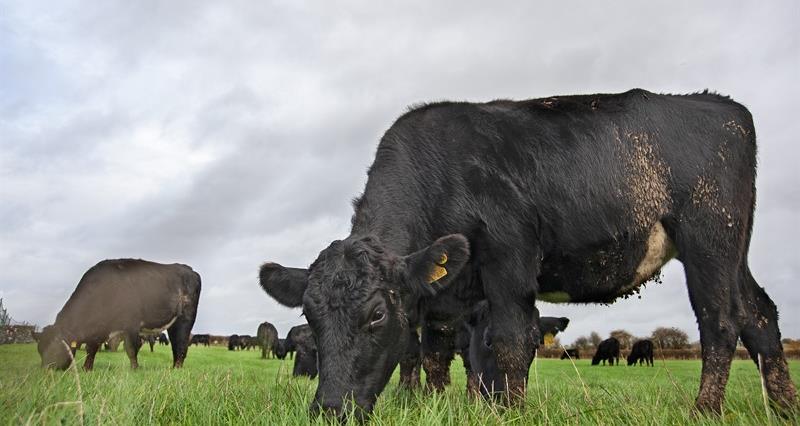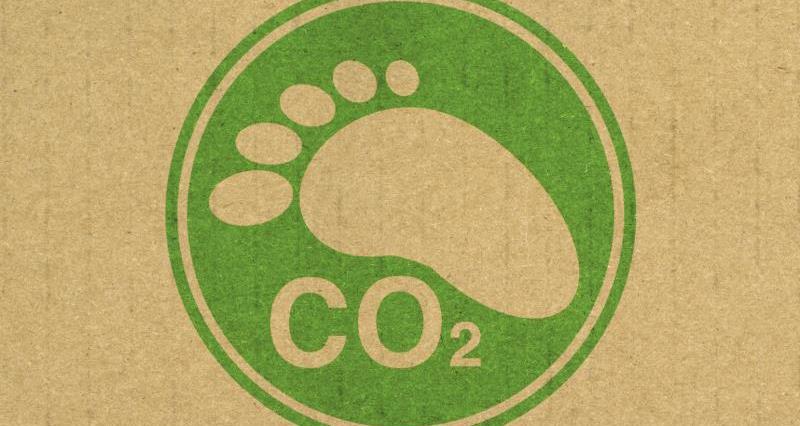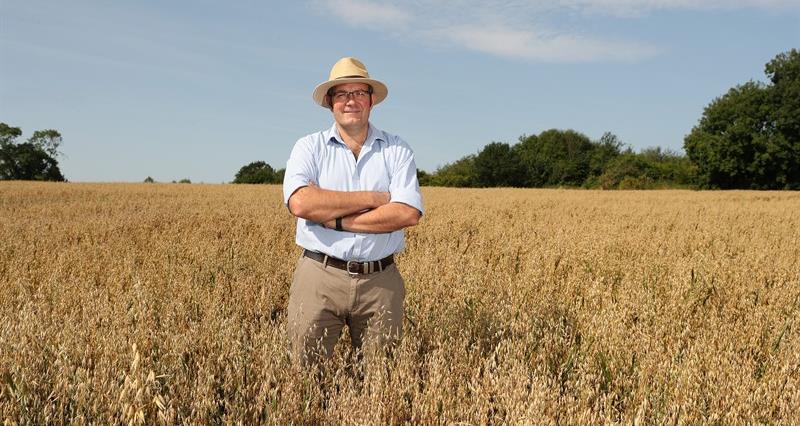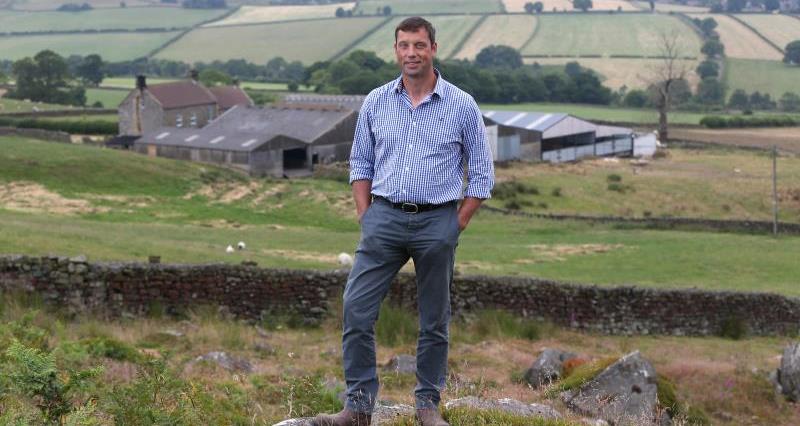Why are GHG emissions important to food producers, processors and retailers?
Many processors and retailers already have to report on their financial climate-related risk or have set voluntary net-zero targets. They are also under pressure from investors, non-governmental organisations, and for food labelling.
The government will soon require that all listed companies have a net zero transition plan with an ambition, interim target and decarbonisation plan. All GHG emissions from food production and processing are embedded in the products on the retailers’ shelves; they sit on their Scope 3 GHG account. Scope 3 emissions are often the most significant proportion of a company’s footprint.
How does Scope 3 apply to agriculture?
As shown below, Scope 3 extends upstream and downstream of a farm’s operations. GHG emissions work like VAT passing down the supply chain, accumulating GHGs. Each input has associated emissions which contribute to the end product.
- Upstream emissions include all bought-in inputs such as manufactured fertiliser, imported feed and machinery and equipment, and transport of supplies.
- Downstream emissions include packaging, packing and distribution, and food preparation and cooking.
What are the benefits to the farmer or grower of supply chain Scope 3 requirements?
Efficiency gains on farm can reduce your GHG output and improve productivity. Lower GHG products supplied by farmers and growers may enable improved market access. The supply chain may incentivise farmers to take actions which reduce emissions. This could be through paying for the actions on farm or through a product premium. Such an agreement will reduce Scope 3 for the processor/retailer, benefiting the whole supply chain.
In this instance, any GHG or carbon benefit remains part of the farm’s reduced footprint. Other potential benefits include:
- opportunity to develop a more collaborative and long-term relationship with buyers.
- banks could offer preferential terms for lending.
- opportunity to feed into aggregated footprint data to promote sustainable food, particularly for export.
Supply chain insets
Processors and retailers will aim to reduce emissions as far as possible. To try and achieve net zero, they may look to ‘offset’ their remaining emissions by buying carbon credits that counterbalance their Scope 1 and 2 footprint.
Rather than paying for actions on farm, the supply chain may wish to buy carbon credits from producers, keeping the benefit within the supply chain as so-called ‘insets’. This would require a longer-term private agreement between the farmer and the supply chain. Once sold as an inset to a processor or retailer, the GHG or carbon benefit will no longer be included in the farm footprint. Similarly, the credit will transfer from the Scope 3 account of the processor or retailer to net off against their own Scope 1 and 2 footprint.
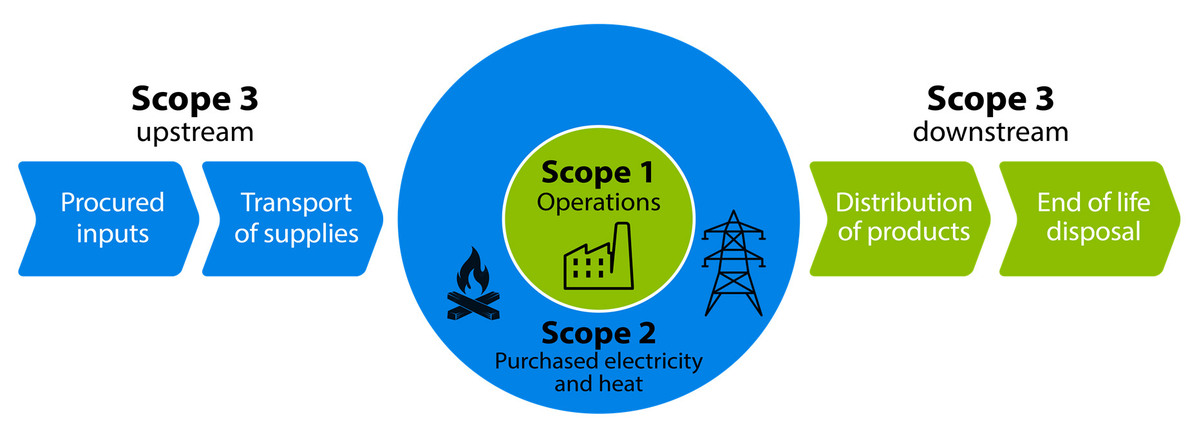
Should I share my data with customers?
The data you share with your supply chain (directly or through an appropriate independent third party specialising in GHG reporting) allows them to report their emissions more accurately.
Without on-farm data from their value chains, the supply chain can only use information from databases which may not be up to date or may be based on global averages. Data shared with the supply chain will be subject to data protection law. Your footprint will more accurately reflect the good work farmers and growers are doing and will help promote the sector’s competitive advantage.
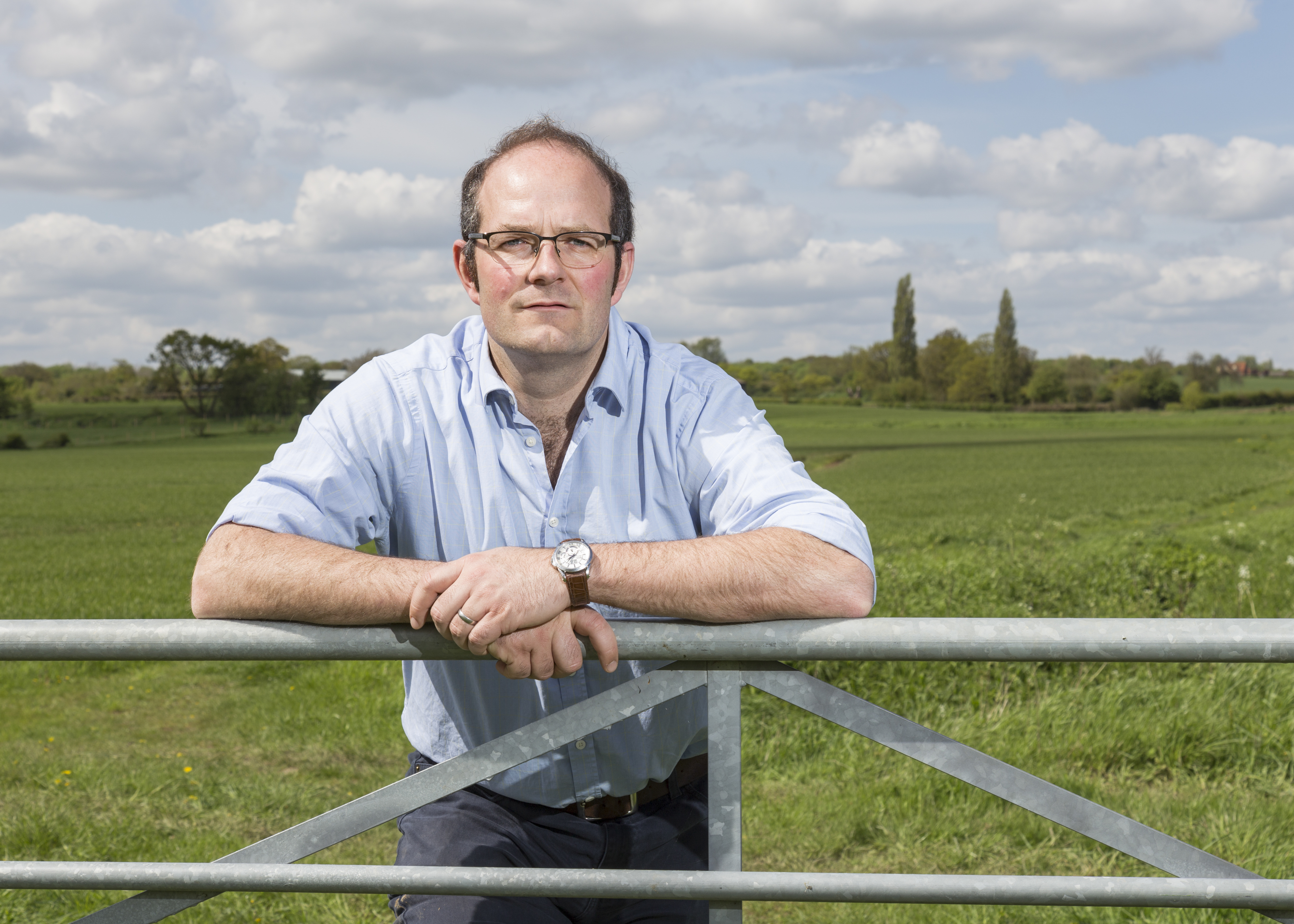
“If we can’t tell the story behind the product, then we won’t be the product of choice.”
Tom Bradshaw, NFU Deputy President.
Can the supply chain take my carbon?
Sharing Scope 3 data with the supply chain does not link to your carbon credits. When you provide data, your GHG or carbon benefit remains a part of your farm’s reduced footprint.
A carbon credit would be generated as a result of entering into a specific carbon offset agreement.
What should I do if my customers want to enter into a Scope 3 agreement?
The NFU's Legal Assistance Scheme can check over your contract if you have any concerns.
Is Scope 3 double counting?
Double counting is when a carbon credit is counted more than once when talking about carbon offsets and insets. It does not apply to Scope 3, which categorises where the share of emissions comes from.
For the producer, it will be a direct emission and for the customer it will be indirect.
The carbon in the process is apportioned between users. For example, a co- or by-product would share some of the carbon from the main product, or where there are two or more legal entities involved in production, they would share the footprint between them.
Which GHG calculator should I use?
We suggest choosing a tool that suits you and your farm system and then sticking with your choice to build a picture over time. The supply chain will be looking to map your progress, so the calculator can be used as a decision-support tool to help you think about where to take action. Calculators are models based on input data. See our calculator review. Could the supply chain choose producers based on their GHG footprint? Retailers may favour lower GHG products, although this will continue to be one factor of many (price, quality, location, etc…).
Competition on GHG performance between producers could drive productivity and profitability, helping to move the industry towards net zero, particularly in areas where efficiencies drive lower production costs alongside lower farm emissions.
There is, however, a risk that production costs could increase to meet commitments. Fair supply chain agreements are needed to support farmers. Higher footprints on some farms may be structural or because of land or geography.
There may be opportunities to deliver other environmental benefits, such as biodiversity. Not every farm needs to be able to get to net zero – it is an ambition across the industry. Can the supply chain claim my low GHG product as part of their net zero progress? Yes, they can use the average footprint of all their suppliers to claim that their products are low carbon or carbon neutral where applicable. This would mean some suppliers may be net negative while others have higher emissions. There is more work to do on the measurement of carbon sequestration to verify footprints.
Should I build carbon stores to improve my footprint?
The primary focus should be on reducing emissions from production – resource use efficiency measures will save you money and can be easier to quantify.
Additional carbon sequestration is important and necessary, but the environmental markets are still evolving, and there is much uncertainty. It is also still being determined what the size of its contribution to net zero could be and its role in meeting Scope 3 commitments.
What about trade if we are not on a level playing field?
International trade allows for varying degrees of standards at different prices to encourage competition. A level playing field would need sustainability and environmental standards on imported food products to match standards in the home market. There are challenges to achieving this, but this is crucial so that our low-carbon products are not displaced through increased reliance on imports.
